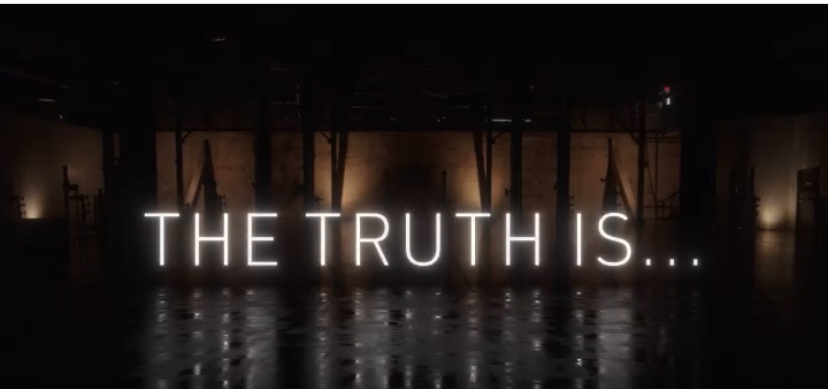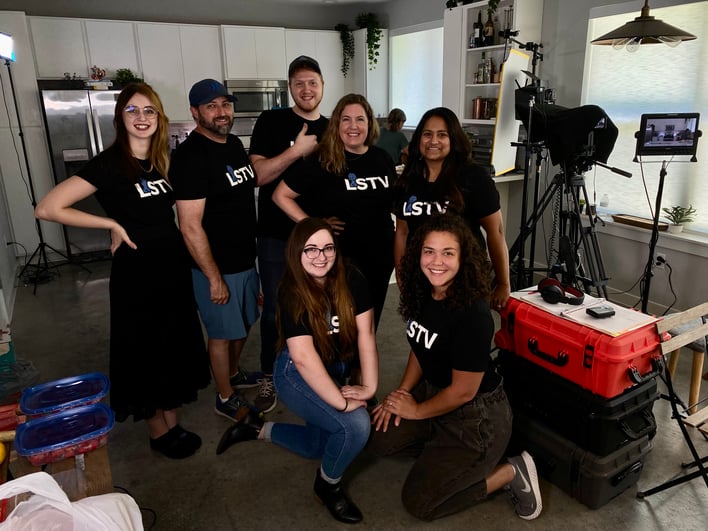

Blogs 
October 14, 2021
Living Security Team
Meet the Creative Dream Team Behind Living Security’s Popular Training Videos

CISOs and program owners love Living Security’s on-demand training and team exercises because they’re effective. Employees love our video content because it’s interactive and—unlike most other security awareness training on the market—entertaining. Our Director of Demand Generation, Dave Winter, and our copywriting resource Erin Lancione sat down with the creative dynamos from our content team to learn more about what goes into producing Living Security’s uber engaging training content.

Living Security's Content Team. From top left: Ansel Lowry, David West, Jason Ferenczy, Stephanie Pratt, Bhavana Patel. Front row: Persephonie Cole, Morgan Obregon.
Dave Winter: What does Living Security’s Content team do?
David West, Head of Content Creative: The Content team is responsible for concepting, writing and producing Living Security’s training content. It's ever changing, but for the most part we create series, team experiences and modules.
Dave Winter: Which comes first, the learning objective or the creative treatment?
Stephanie Pratt, Senior Security Awareness Content Manager at Living Security: It’s a little bit of both. There are times when we come into the process asking what types of content we can dream up. Often, though, we start with the learning objective. My side of the house is strategy and implementation. We come up with the training concepts and then work with Dave’s side of the house to bring those to life creatively. Once the videos have been produced, my team creates the learning piece of the training, whether that’s puzzles and escape rooms or quizzes, builds them in our learning management system. From there, we test them, translate them into nine different languages and get them out to the market.
Morgan Obregon, Production Manager: A lot of client feedback goes into which learning objectives we need to be covering. That informs the story and where the series starts before it goes into creative development.
Dave Winter: How do you decide what those learning objectives are?
Stephanie Pratt: I started as a client of Living Security. I worked at a software company, where I ran the security awareness program. A lot of what we create comes out of how we trained our employees, what works, the feedback we got about what our end users wanted to see more of or less of.
Morgan Obregon: We look closely at user feedback as well, going literally line by line, looking at the hard stats about what the end users are recommending and making sure we’re using that to guide future content.
Dave Winter: Living Security’s training has a reputation for being fun, and that’s in no small part because of the Content team’s work. How do you create content that's both highly watchable and educational?
Morgan Obregon: Right now, we're working on a cooking show. And you may ask, How can a cooking show be related to security awareness? We're constantly trying to figure out how to walk that line, how to keep people entertained while also giving them the knowledge at the same time.
-1.jpg?width=4032&name=Image%20from%20iOS%20(2)-1.jpg)
On the set of Living Security's newest series.
Dave Winter: Where do you get the ideas for your new series and modules?
David West: Back in the early days of the company, the Content team was really just two of us. A lot of times, we built stuff based on what we thought was cool. Now, we're getting much better at framing our content around what the market wants, listening to customer feedback, seeing what's going on in pop culture. And it's a ton of brainstorming; we try to get a bunch of us in a room and we throw a lot of stuff at the wall until something resonates. Our latest series is formatted like a reality makeover show. When that idea came out, it resonated with everyone. Those are the ideas that we latch onto and move forward from there.
Stephanie Pratt: Some of our series are really cool and edgy. And for some of our customers, the feedback was that they wanted something a little bit more lighthearted, less dramatic. That's why we produced Secure My Life, our new reality makeover series.
Dave Winter: How long does it take to produce a Living Security training series?
Morgan Obregon: It's really different depending on how big the project is, but I would say a month and a half is a pretty good estimate, from start to finish.
Dave Winter: Where do you find the actors in your series?
Morgan Obregon: We use a casting agency.
David West: One fun note is that you'll usually see at least one cameo by some Living Security employee in almost every piece of content.
Stephanie Pratt: We’re also working on increasing diversity in who we cast. That’s something that came out of customer feedback and that we’ve focused really heavily on this year.
Dave Winter: Where do you film the videos?
David West: Anywhere we can film them! You know, we were planning to film Born Secure: Web of Lies right before COVID hit. We had a completely different script than the one we ultimately used (Born Secure: Training Grounds). The series was supposed to have a cast of twenty and involve a bunch of different shooting locations. All of a sudden, we couldn't do that. So we rewrote the script to be one guy in a training bunker by himself and all of his interactions were over his computer. We shot it, just a handful of us, in an attic by ourselves. It came out good; really creative. We never stopped, we pivoted from physical escape rooms to digital escape rooms. COVID was a horrible thing but it did force all of us on the Content team to move into our next phase.
Dave Winter: What do customers enjoy about Living Security’s training videos?
Stephanie Pratt: New students love how short and sweet the content is and the fact that it doesn't talk down to them. It’s really high level and bite-sized, so users can complete the training in whatever amount of time they have.
Morgan Obregon: It’s engaging and interesting. A lot of people say, “I've never seen this type of training before. It's so refreshing to get something that's this interactive.”
Dave Winter: What’s next for the Living Security content team?
Morgan Obregon: We are actually just about to get into planning our next year. We’re creating new healthcare-specific team training experiences. That's something like we've never done before, because it'll be a shorter format, a little bit different than our full escape room experiences. That's exciting. With each new project, we keep coming up with really out-there ideas that Living Security hasn't seen before, like Secure My Life and the cooking show. I think we're all really excited to see what we can create and how far we can kind of stretch it while also making them educational.
David West: I love that I have no idea what the next big creative idea will be. We try to outdo ourselves, every time.
Stephanie Pratt: One of the other things that we'll focus on in the next year is giving our customers that work with their company culture, the time frame, the style that works best for their users. For example, there are a lot of security topics that tend to come up repeatedly, but at the same time, you can't assign the same content to users over and over again. You can't just have one phishing module; users need fresh content. We want to give our clients more options so that they have different ways to assign similar training topics. It’s a way to help program owners respect their users, like, “Okay, you’re still struggling with this concept, here’s a different video that will help.”